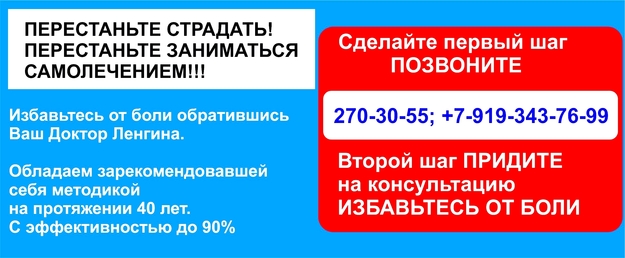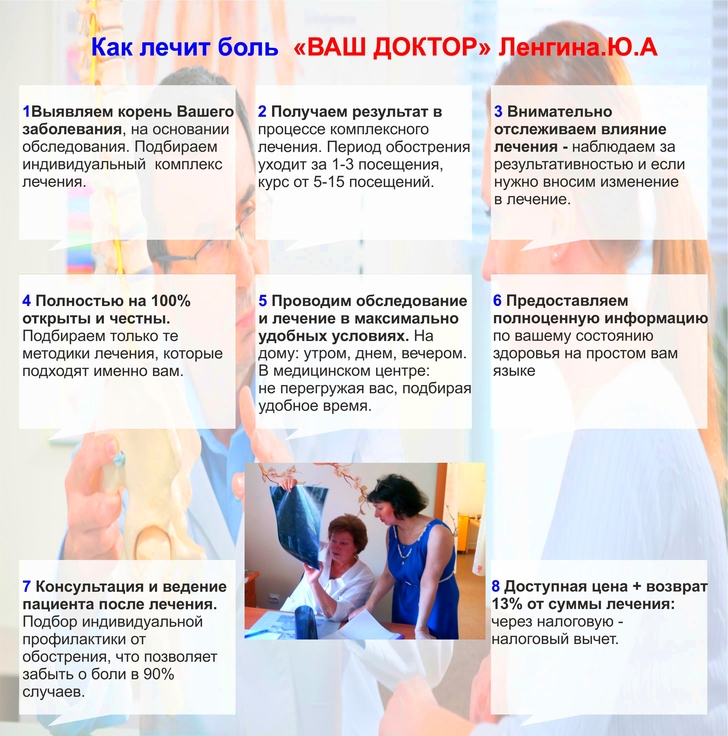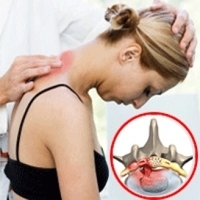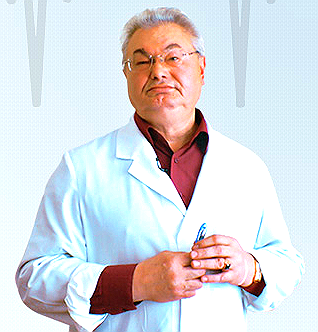Antipyretics for children are prescribed by a pediatrician. But there are emergency situations for fever when the child needs to be given medicine immediately. Then the parents take responsibility and use antipyretic drugs. What is allowed to give to infants? How can you bring down the temperature in older children? What medicines are the safest?
Foot neuralgia symptoms
- The main factors causing damage to the nerve trunks are injuries, diseases of the joints, tumors of the legs;
- Inflammation of the nerves based on emotional stress - neuritis of the lower extremities;
- damage to ligaments, muscles or bones;
- Disorder of the functions of some vessels in the legs, as a result, a failure occurs, angioedema occurs, as well as a disease of the nerve vessels;
- Intoxication, p post-vaccination allergy;
- Various hypothermia and injuries;
- Increased consumption of alcoholic beverages - intoxication;
- Infringements - on the basis of nerves or as a result of increased stress;
- Tumor diseases;
- metabolic disorders, etc.

Neuralgia manifestations
Nerve fibers are divided into three types:
- Vegetative;
- sensitive;
- Motor.
Neuralgia of the femoral nerve
Manifestations of neuralgia of the legs:
- The presence of paroxysmal pain that spreads throughout the leg of the diseased nerve;
- Muscles are prone to numbness, or loss of sensation;
- The skin in most cases may turn blue, at the site of origin of the neuritis;
- Severe swelling and sweating appear;
- Polyneuritis is spread by larger pinpoint manifestations in lower limbs;
- The symptomatology of mononeuritis is most pronounced in the form of the same pain and numbness, in any part of the leg;
- Inflammation of each of them has its own symptom.
- The severe stage of the disease is expressed in the form of loss of tendon reflexes;
- In the place where the focus of neuritis and nerve damage arose, muscle atrophy appears later, although paralysis is excluded with local manifestations of neuritis;
- In pregnant women, a common cause is the endemic factor of neuritis, the basis of which is the lack of B vitamins.
Neuritis causes
The neurology of the legs is divided into the following types according to their location in the legs:
- Inflammatory process of the nerve plexus in lumbar The reason for this is plexitis. With the course of this disease, there is: pain in the leg, in the lower back and hip joint. The consequences are manifested in the form: the muscles of the thigh and lower leg lose their sensitivity, the foot begins to swell and trophic disorders of the nails occur.
Neuritis of the sciatic nerve
manifests itself through a dull pain spreading to the back of the thigh and buttocks, often from the thigh to the foot there is numbness. Most often, the muscles of the lower leg are in a reduced tone, in some cases they atrophy. As a rule, this neuritis is observed in people suffering from flat feet.
- Often this pain is confused with sciatica - with the similarity of the symptoms of the manifestation. Although with sciatica, the pain begins to get worse when you change the position of the legs or feet.
Neuritis of the femoral nerve
- is detected by pain that occurs during flexion or extension of the legs. The pain syndrome on the anterior surface of the thigh, as well as located above the inguinal fold, manifests itself very strongly. In this case, it becomes difficult for a person to climb stairs. This type of neuritis is called neuralgia or neuropathy. At the same time, there is a great similarity of symptoms between arthritis and arthrosis. hip joint. To identify the true cause, a neurological examination is used in order to exclude diseases of the joints of the legs.
Compression of the sciatic nerve
- occurs on the anterior lateral side of the thigh is called paresthetic meralgia, or as Berigardga-Rota is also called. When the disease is just beginning, a person does not attach much importance to the sensation of "crawling" while walking, or the tingling and burning of the skin of the thigh. Subsequently, cooling or numbness of the skin occurs, turning into pain and back, often felt at night.
Neuritis of the tibial nerve
- accompanied by pain and decreased sensitivity of the back of the leg. At this time, the patient feels pain when bending the toes and moving the foot.
- Pain in the front outer part of the lower leg and sagging of the foot, leading to the fact that the patient needs to raise the leg high while walking, which shows peroneal neuritis.
How to treat foot neuralgia
At the first symptoms, you should consult a doctor. At first glance, a harmless manifestation of neuralgia: goosebumps, warmth on the skin of the legs, or feet, a slight burning sensation, may not be taken seriously by a person. Although these are the first initial symptoms of neuralgia.
But when the disease is due to a nervous breakdown, or hypothermia, or physical activity or an injury suddenly turns into an acute part, a person begins to seem to grab onto everything in a row, just to appease sharp pain. Now, in the age of the Internet, people go to portals and websites and begin to look for prescriptions for treatment.
Statistics show that with self-treatment in 85-90% of cases, the patient makes an incorrect diagnosis. Writes out not proper treatment. Buying in the pharmacy chain for treatment. As a result, neuralgia may subside for a while, but suddenly reopen with a new doubled pain, in which it is even difficult to fall asleep, not to mention the ability to work.
|
IN medical center"Your Doctor" has developed a targeted program for the treatment and restoration of joints and backs and neuralgia. The technique has been verified for more than 25 years. The proven technique effectively copes with the tasks assigned to it with an efficiency of 85-95%. An integrated approach, with the identification of the true cause of the disease and subsequent treatment, guarantees recovery and relief from pain. After undergoing complex individual treatment, we accompany the patient with recommendations to prevent other diseases of the joints and spine and neuralgia. |



A very dangerous and unpleasant disease is neuralgia: the symptoms are numerous, depending on the form of the lesion. nervous system on different levels and stages of the inflammatory process. Clinical and neurological examination allows to identify pathology in neuralgia, the causes of occurrence are often ignored.
Unpleasant sensations can be constant (prolonged) and spontaneous, arising in the absence of an external stimulus.
The main causes of neuralgia should be identified:
- trauma;
- multiple sclerosis;
- inflammation after herpes;
- tumors;
- surgical operations.
Pain syndrome develops with damage spinal cord at HIV-infected patients.
It is customary to distinguish the following types of neuralgia:
- inflammation of the large occipital nerve;
- acute process in the nasociliary node;
- damage to the plantar, trigeminal and glossopharyngeal nerves.
It was possible to find out that the hereditary factor is the reason for the occurrence of the disease. Often, the pathology is associated with HIV syndrome or cytomegalovirus infection. Although it is known how occipital neuralgia manifests itself, it should be remembered that nausea and vomiting can be symptoms of another disease, such as a brain tumor.
What is the defeat of the nasociliary node or Charlene's syndrome, a patient suffering from herpes should know. In this case, the cause of pain is clear: viral intoxication contributes to the development of an acute process.
What does a person feel before an attack develops?
Signs of neuralgia of the occipital nerve indicate the appearance of extensive inflammation. The main symptom is pain localized in the back of the head. With neuralgia in pathological process the meninges, cervical spine, muscles and skin are involved. Often in adult patients there are paroxysms that last for a long time. Inflammation of the intervertebral joints causes neuralgia - signs of disc pathology are pronounced. For acute form the disease is characterized by the development of a crisis.
In the elderly, damage to the trigeminal nerve occurs with caries, sinusitis, tumors of the cranial fossa, herpes infection. The manifestation of neuralgia is a sudden onset of an attack, for example, after touching the skin of the face or blowing the wind. In the case of pain radiating to the ear, the development of inflammation of the glossopharyngeal nerve is suggested.
The problem is there
Symptoms of neuralgia of the pterygopalatine ganglion appear within a few hours. Then the attack ends. Characteristic is the regression of pain after the cessation of the stimulus. With neuralgia, the patient experiences discomfort in the upper jaw, extending to the soft palate.
The cause of the disease is an inflammatory process in the oral cavity, a fracture of the zygomatic bone, alcohol consumption, stress, and a malignant tumor. Often during an attack, the appearance of contraction of muscle bundles is observed. soft palate, there is a characteristic clattering sound.
In some cases, a neuralgic attack is accompanied by autonomic disorders. The patient complains of redness of the mucous membrane of the eyes, lacrimation, the appearance of edema on the face. A small amount of clear mucus is discharged from the nose. The development of acute attacks of neuralgia is characteristic - the symptoms of the disease intensify at night, accompanied by psychomotor agitation and motor restlessness.
Morton syndrome
The disease is characterized by damage to the plantar nerves. The patient complains of discomfort in the foot. At the beginning of the disease, he is forced to take off his shoes and massage the muscles in order to alleviate the condition. In many cases, the attack begins at night. Paroxysms reach their peak after a few hours, the sciatic nerve becomes inflamed.
Sharp pain can appear in the area of the affected nerve trunk. The patient's fingertips become more sensitive. In the process of therapy, one should take into account the features of this type of neuralgia - the disease is difficult to treat due to the constant injury of the nerve trunks. Accepted standard relief from excruciating pain includes the use of analgesics and diuretics.
During an attack, the patient tries to retire, complains of a feeling of fullness in the foot. In this case, the establishment of the degree of nerve damage allows you to choose effective therapy. Of great importance is surgical treatment preventing the further development of the disease.
Therapy for inflammation of the trigeminal nerve
For treatment, a medicine from the group of anticonvulsants - Finlepsin is used. Its dose is increased gradually, and the effect of therapy is observed after a few days. The drugs of choice for treatment are the following anticonvulsants:
 “Complete healing of joints and back for 1 RUBLE!”
“Complete healing of joints and back for 1 RUBLE!”
A federal program has been launched to rid the population of diseases of the musculoskeletal system! It's hard to believe but effective drug funded by the Ministry of Health. Terrible statistics show that a banal crunch and pain in the joints often end in disability! To avoid this, you need to take a penny remedy ...
- Difenin;
- Morpholep;
- Ethosuxemide;
- Trimetin;
- Clonazepam.
In combination with Finlepsin, vasodilators and diuretics are effective:
- A nicotinic acid;
- Furosemide.
When other medicines fail, the following nootropics are used:
- Aminolone;
- Cavinton;
- Trental;
- Piracetam.
Diagnosis in typical cases is elementary simple. However, the doctor must exclude the possibility of secondary forms of inflammation of the trigeminal nerve. This task is relevant if bilateral neuralgia develops - symptoms and treatment are carried out according to the traditional scheme, taking into account the degree of damage.
In some cases, surgery may be prescribed. Microvascular decompression and destruction of nerve roots with the help of electric current is very effective. The consequences of the tumor are also removed surgically, achieving complete elimination of pain.
Treatment of neuralgia with prescriptions used by people in the past gives positive result. Helps relieve an attack of alcohol tincture of wild rosemary shoots. The sore spot is rubbed at night, using the remedy until the discomfort disappears completely.
Treatment of neuralgia with the help of room geranium leaves (pelargonium) can reduce painful sensations. It is necessary to attach the raw material to the area of the skin where the pain can be very severe.
During therapy, you can take drugs based on medicinal plants that have anti-inflammatory and restorative effects. It is useful to drink a decoction of St. John's wort, black elderberry flowers and birch buds. Quick relief can bring the use of the collection, which includes the following plants:
- Ivan tea leaves;
- oregano herb;
- linden flowers.
Traditional healers know whether it is possible to reduce pain by rubbing the inflamed area with herbal alcohol tinctures. Therefore, preparations made from mountain arnica flowers and eucalyptus leaves are very popular. After the end of the procedure, the affected area must be covered with a warm woolen scarf.
How to relieve a migraine attack
Treatment of neuralgia, accompanied by the appearance of a "bundle" headache, implies an impact on the cause of the disease. For therapy, the doctor suggests the drug Mexiletin, which eliminates discomfort and has an analgesic effect. This type of neuralgia can be cured using the following drugs:
- Amitriptyline;
- diazepam;
- Curantyl.
How to treat neuralgia, if attacks occur frequently, the doctor will tell after examining the patient. For the treatment of an acute condition, drugs are used:
- Ergotamine;
- Caffeine;
- Seduxen;
- Pipolfen.
In severe cases, to relieve an attack, the patient is recommended to use the drug Dexamethasone. The drug has anti-inflammatory activity. It eliminates pathological reactions in neuralgia - treatment is aimed at suppressing unwanted immune processes.
Often, glucocorticoid drugs used to get rid of neuralgia cause the appearance side effects.
Elimination of pain in case of inflammation of the pterygopalatine node
Acute pain is treated with pharmacological methods and electrical nerve stimulation. The patient develops a lasting effect after a few days or months. People often encounter manifestations: what to do in the case when there are areas of numbness of the skin and noise in the ear, the doctor will advise after establishing the diagnosis.
To prevent complications, you need to know how to cure inflammation with local anesthetics. Typically, gels with 2.5% and 5% Lidocaine content are used. In case of development pain syndrome prescribed tricyclic antidepressants.
Pathology is successfully treated with drugs:
- Amitriptyline;
- fluoxetine;
- Paroxetine.
Medicines from the group of benzodiazepines have been proposed for the prevention of side effects in neuralgia: how to treat the disease with their help is known, thanks to clinical studies.
The following drugs are offered for therapy:
- Baclofen;
- Sirdalud.
Information about how to get rid of pain with valproic acid is contradictory. The use of the drug is limited.
The advantage of any treatment regimen is the fact that in the early stages of therapy, the patient's condition improves significantly.
Do you still think that getting rid of osteochondrosis is not easy?
Have you tried all possible means, but the pain does not recede and prevents you from living a full life? Apparently yes, since you are reading these lines, and not playing with your children and grandchildren.
Stop adapting to back and joint pain, we strongly recommend reading Dr. Dikul's article on how to get rid of osteochondrosis and back pain...
It occurs suddenly, in any part of the body and manifests itself as a sharp, sharp, paroxysmal pain. An attack of neuralgia can provoke a draft, a working air conditioner, an open window in the car, any hypothermia of the body. Because nerve endings in humans are located throughout the body, then the above causes can cause disease of the nerve and its plexuses, in nearby tissues and organs. Neuralgia has a many-sided face - burning, aching, Blunt pain can occur anywhere in the body and disguise itself as any disease: heart attack, renal colic, osteochondrosis, gastritis, etc. - the list is endless.
Causes of neuralgia.
Most common causes leading to neuralgia are:
ARI, influenza and other colds
Metabolic diseases such as gout
Hypothermia of the body
Poisoning - toxic and alcoholic
Injuries and diseases of the spine, such as osteochondrosis.
Signs of neuralgia.
The main signs of neuralgia are:
Intermittent aching, sharp, burning pain along the nerve and its branches
Paleness or redness of the skin
Increased sweating
muscle twitching
Types of neuralgia:
There are several types of neuralgia:
occipital nerve
trigeminal nerve
sciatic nerve (sciatica)
intercostal nerves
brachial plexus
Occipital neuralgia is characterized by pain extending from the neck to the back of the head, and may also occur in the temples and eyes. It becomes difficult to turn your head, most common in people who have cervical osteochondrosis. It occurs most often due to hypothermia.
Trigeminal neuralgia is characterized by severe pain, localized in the cheeks, wings of the nose and gums. It can occur suddenly during a conversation, eating, when touching the face. Often the cause of trigeminal neuralgia is inflammation of the gums, sinuses, dental disease and injury. Windy weather, a draft, taking hot or vice versa, cold food, and even a loud sound and bright light can provoke an attack.
Intercostal neuralgia occurs mainly in people who have problems with the spine, and causes hypothermia. The insidiousness of intercostal neuralgia lies in the fact that it is easy to confuse it with a heart attack. But still there is a difference: during a heart attack, pain can be relieved by taking, for example, nitroglycerin, and with a deep breath, sneezing or coughing, changing position, the pain does not increase.
If pain is felt in the lower extremities along the sciatic nerve, then this disease is called sciatica. The cause of sciatica is a lesion of the lumbar plexus or lumbosacral roots, the pain most often increases at night.
If you have attacks of neuralgia, then you should definitely see a doctor. The doctor will be able to accurately determine the organ that affects the nerve endings. And also, in order to exclude a tumor formation, which can also provoke neuralgia. The doctor will prescribe physiotherapy, acupuncture and other procedures that are now in the arsenal of conservative medicine.
Folk methods of treatment of neuralgia.
At home, you can also use the following folk remedies to reduce and relieve pain:
If it grows in your house, then you can apply its healing leaves to a sore spot: pick a few fresh leaves from the plant and, putting them on a linen cloth, bandage them to the place that hurts, and wrap them with a warm scarf on top. Keep at least 2 hours, change the leaves for new ones several times.
Chamomile flowers are good medicine coping with trigeminal neuralgia, with various neuroses, convulsions, since chamomile has a calming and anticonvulsant effect. Prepare an infusion: brew 2 tablespoons of chamomile flowers with 1 cup of boiling water and, after 20 minutes, take half a cup 3 times a day 20 minutes after meals.
Neuralgia of the sciatic nerve is treated with the help of horseradish leaves - apply its fresh leaves to sore spots and wrap it with a warm scarf. A steam bath also helps to expel neuralgia of the sciatic nerve.
Willow bark helps to get rid of neuralgic pains: dried and crushed bark - 10 g, pour glasses of boiling water and simmer for 20 minutes under a lid over low heat. After the infusion has cooled, strain it and take 1 tablespoon 3-4 times a day before meals.
A decoction of peppermint is another remedy that helps with neuralgia. To prepare it, take 1 tablespoon of raw materials and brew with 1 cup of boiling water, after 10 minutes, take half a glass 2 times a day - in the morning and in the evening.
Trigeminal neuralgia is treated with red beets: grate it, put it in gauze and wring it out slightly, insert a swab into your ear.
Another folk way treatment of neuralgia: boil an egg hard-boiled, peel it and, cutting it in half, immediately attach it to the place where the pain is the strongest. As the egg cools, the pain will go away.
Therapeutic baths with sage, which should be taken in courses - 10 baths every other day. Take 4 tablespoons of sage and pour 0.5 liters of boiling water. Let it brew for an hour and, straining through gauze, pour the broth into the bath. Add 4 tablespoons to it. sea salt. Therapeutic baths should be carried out at a water temperature of 37 degrees for no more than 5-10 minutes. After the bath, you need to wipe yourself dry and wrap yourself in a terry bathrobe immediately go to bed.
And I can not say about self-massage, which you can do yourself. It is very effective for any neuralgia, it takes a little time. Anyone can master his tricks:
first massage the ring fingers of both hands for 3 minutes each
then massage both ring fingers from the back of the hand from the nail to its very base and further in the same direction over the entire back of the hand. Here is the so-called meridian of the three parts of the trunk, which has a lowering effect on pain in the lower jaw, neck, elbows and shoulders.
Self-massage of the feet can also improve well-being. It must be performed both on the outside and on the sole itself, which have a large number of points, which, when exposed, can reduce pain in case of neuralgia.
Tereshkina Anastasia

 That is why the medical center "Your Doctor" calls on the first harmless symptoms to see a doctor!
That is why the medical center "Your Doctor" calls on the first harmless symptoms to see a doctor!


